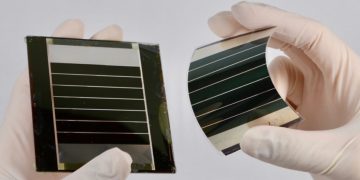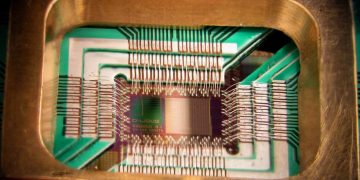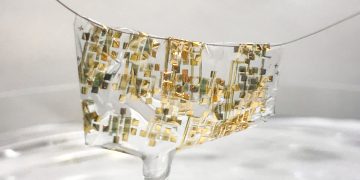Introduction: The Growing Issue of Electronic Medical Waste (e-waste)
In the era of digital health and rapid technological advancements, the healthcare industry has witnessed an explosion in the use of electronic devices and medical equipment. From diagnostic machines to patient monitoring systems, medical technology has become indispensable for modern healthcare delivery. However, this technological revolution comes with a significant downside: the generation of electronic medical waste (e-waste).
E-waste in healthcare includes items such as outdated medical devices, obsolete diagnostic tools, electronic implants, and disposable electronic health products like thermometers, blood pressure monitors, and glucose meters. As the volume of electronic devices in healthcare continues to increase, so does the challenge of managing the environmental impact of this waste.
In light of carbon neutrality goals and the growing concerns over climate change, there is increasing pressure to reduce the environmental footprint of industries, including healthcare. E-waste, with its toxic materials and non-biodegradable components, poses serious environmental and health risks when not properly managed. However, green technology—encompassing environmentally friendly innovations in production, disposal, and recycling—holds promise in mitigating the pollution caused by electronic medical waste. In this article, we explore how green technology can address this challenge and contribute to a more sustainable healthcare industry under the carbon neutrality agenda.
The Environmental Impact of Electronic Medical Waste
Electronic medical waste, like all e-waste, is notoriously difficult to dispose of safely. Many medical devices contain hazardous materials such as mercury, cadmium, lead, and phthalates, which can leach into the environment when improperly disposed of. When these materials enter landfills, they can contaminate soil and water supplies, posing a long-term threat to ecosystems and human health.
The environmental impact is compounded by the sheer volume of medical devices being discarded as they become obsolete or break down. For example:
- Obsolete Devices: Medical devices typically have a shelf life that is limited by technological advancements. As new models and more efficient devices are introduced, older equipment is replaced, contributing to the accumulation of waste.
- Disposable Medical Equipment: Single-use medical devices and accessories, such as thermometers, hearing aids, and surgical tools, also contribute to the volume of waste. While these devices are crucial for patient care, their frequent disposal leads to significant environmental costs.
- End-of-Life Devices: Some medical devices, such as pacemakers or implanted sensors, contain materials that require careful disposal. When these devices reach the end of their life, they can become a significant burden on waste management systems.
These devices not only contribute to landfill waste but also generate substantial carbon emissions during manufacturing, transportation, and disposal. As healthcare moves toward more technology-intensive solutions, it is essential to address these environmental concerns and adopt sustainable practices that align with global carbon neutrality goals.
Green Technology in the Healthcare Sector: A Sustainable Path Forward
The concept of green technology involves innovations designed to minimize the environmental impact of industrial processes, reduce carbon emissions, and promote sustainability. In the healthcare sector, green technologies are becoming a key strategy for reducing the environmental footprint of e-waste. Below, we explore several ways green technology is addressing the environmental pollution caused by electronic medical waste:
- Eco-friendly Materials and Sustainable Design
One of the most effective ways to reduce the environmental impact of medical devices is by designing them with sustainability in mind. Green technology is being used to replace traditional, environmentally harmful materials with eco-friendly alternatives. For instance:
- Biodegradable Components: Some medical devices are now being made with biodegradable or compostable materials. For example, certain disposable medical instruments are now manufactured from plant-based plastics, reducing their environmental impact once they are discarded.
- Recyclable Components: Many modern devices are being designed to be easily recyclable at the end of their life cycle. This includes the use of recyclable metals like aluminum and recycled plastics for components, ensuring that more of the device can be reused, reducing waste and lowering the demand for virgin materials.
- Sustainable Manufacturing Processes
Reducing the environmental impact of e-waste starts long before a device reaches its end of life. Sustainable manufacturing practices can significantly reduce the carbon footprint of medical devices:
- Energy-Efficient Production: Manufacturers can reduce energy consumption and carbon emissions during the production of medical devices by transitioning to renewable energy sources such as solar and wind power. Many companies are also adopting energy-efficient production methods to minimize the carbon output of their manufacturing processes.
- Lean Manufacturing: Green technology promotes the use of lean manufacturing principles, which focus on minimizing waste, improving resource efficiency, and optimizing processes. By reducing raw material usage and energy consumption, manufacturers can reduce the overall environmental impact of medical device production.
- Extended Product Life and Circular Economy Models
A shift toward a circular economy in healthcare can greatly reduce the amount of e-waste generated. In a circular economy, products are designed for longevity, repairability, and reuse, rather than being disposed of after a short lifecycle. This model encourages extended product life, reducing the frequency with which medical devices are discarded and replaced. Green technology can support circular economy initiatives in healthcare by:
- Refurbishment and Reuse: Healthcare providers can extend the lifespan of devices by adopting refurbishment programs. This includes reusing components or repairing medical devices, rather than discarding them once they are no longer in use. For example, refurbished imaging machines or patient monitoring systems can be resold or redistributed to healthcare facilities in need, reducing the demand for new equipment and the associated waste.
- Device Takeback Programs: Companies can implement takeback programs for end-of-life devices, ensuring that they are properly recycled or repurposed. These programs can help ensure that electronic waste is managed responsibly and kept out of landfills.
- Advanced Recycling Technologies
When electronic medical devices do reach the end of their lifecycle, proper recycling is critical in reducing their environmental impact. Advanced recycling technologies are emerging to tackle the challenges posed by medical e-waste, including:
- E-waste Sorting and Separation: New sorting technologies are being developed that can efficiently separate valuable and recyclable materials from hazardous components in medical devices. For example, automated sorting systems use artificial intelligence (AI) and machine learning to identify and sort materials, allowing for more efficient recycling.
- Closed-Loop Recycling: Some companies are implementing closed-loop recycling systems, where the materials from old medical devices are reused in the production of new devices. This reduces the demand for raw materials and minimizes waste.
- Recycling of Precious Metals: Many medical devices, such as electronic implants and surgical tools, contain precious metals like gold, silver, and platinum. Advances in recycling technology allow for the extraction and reuse of these metals, further reducing e-waste.
- Green Disposal Practices and Waste Management
In addition to recycling, there is a need for proper disposal practices for medical devices that cannot be recycled. Green disposal strategies ensure that electronic waste is disposed of in an environmentally responsible manner:
- Certified E-waste Disposal: Green technology supports the use of certified e-waste disposal facilities that comply with international environmental standards. These facilities ensure that hazardous materials are safely handled and that valuable materials are recovered.
- Eco-friendly Packaging: Medical device manufacturers are also focusing on reducing the environmental impact of packaging. Sustainable packaging made from recycled materials or biodegradable plastics can reduce the waste generated by the shipping and distribution of medical devices.

Challenges and Considerations
Despite the potential benefits, the integration of green technology in the healthcare sector faces several challenges:
- High Costs: Implementing green technology often requires significant upfront investment. Sustainable materials, eco-friendly production processes, and advanced recycling technologies can be expensive, which may discourage some manufacturers from adopting these practices.
- Regulatory Hurdles: The healthcare industry is highly regulated, and new sustainable technologies must meet strict safety and efficacy standards. Ensuring that green technologies do not compromise the quality or functionality of medical devices is crucial.
- Awareness and Adoption: While there is growing awareness of the environmental impact of e-waste, many healthcare providers and consumers are still unaware of the benefits of sustainable practices. Widespread adoption of green technologies will require education and incentivization.
Conclusion: A Sustainable Future for Healthcare and E-Waste
Green technology holds great promise in addressing the environmental pollution caused by electronic medical waste. By focusing on sustainable design, circular economy models, advanced recycling technologies, and green disposal practices, the healthcare industry can significantly reduce its carbon footprint and contribute to global carbon neutrality goals. However, for these solutions to be effective, significant investment, regulatory support, and widespread adoption are required.
As the world continues to grapple with the environmental challenges of climate change and resource depletion, integrating green technology into the healthcare sector is not just a trend—it is an essential step toward creating a sustainable, environmentally responsible future for both healthcare and the planet.
















































Discussion about this post